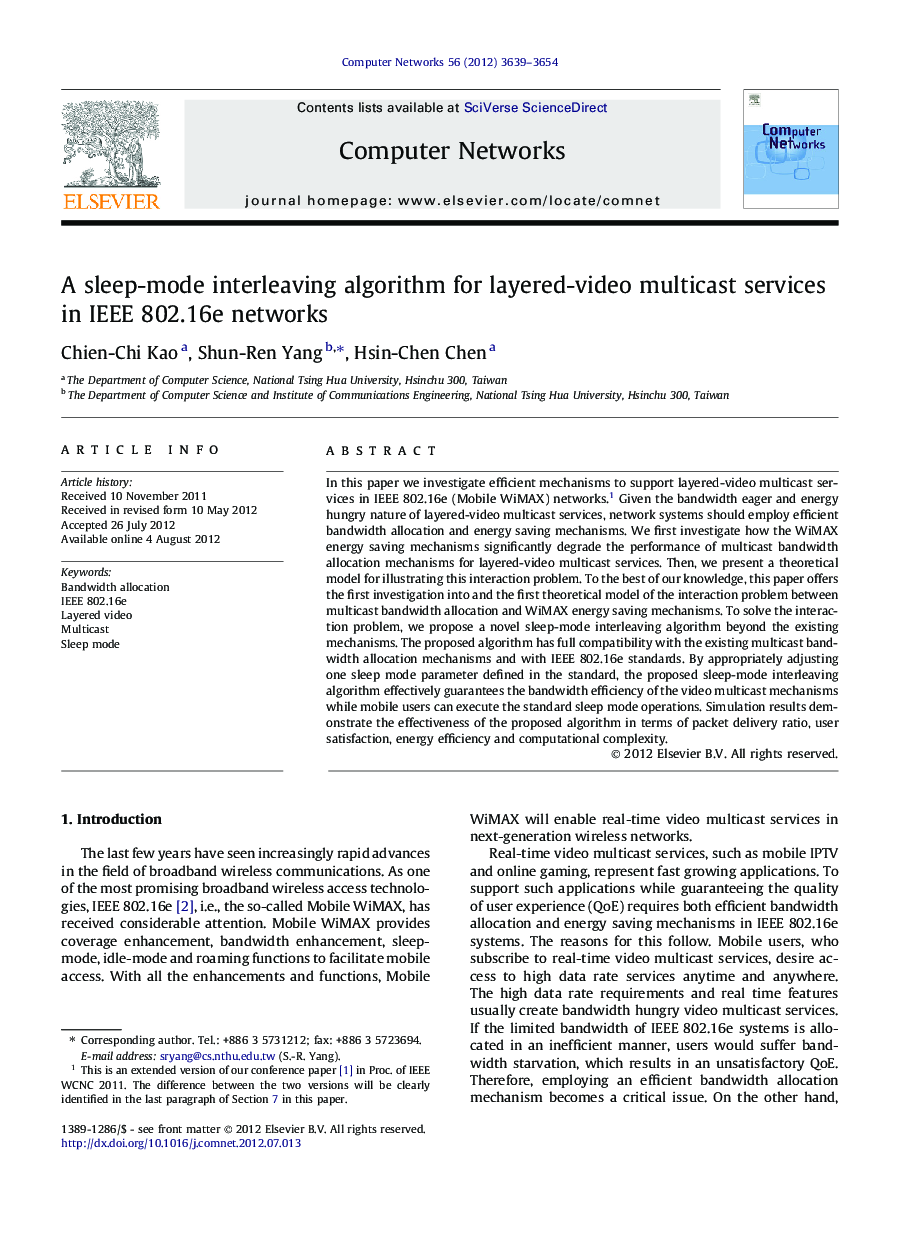| Article ID | Journal | Published Year | Pages | File Type |
|---|---|---|---|---|
| 452000 | Computer Networks | 2012 | 16 Pages |
In this paper we investigate efficient mechanisms to support layered-video multicast services in IEEE 802.16e (Mobile WiMAX) networks.1 Given the bandwidth eager and energy hungry nature of layered-video multicast services, network systems should employ efficient bandwidth allocation and energy saving mechanisms. We first investigate how the WiMAX energy saving mechanisms significantly degrade the performance of multicast bandwidth allocation mechanisms for layered-video multicast services. Then, we present a theoretical model for illustrating this interaction problem. To the best of our knowledge, this paper offers the first investigation into and the first theoretical model of the interaction problem between multicast bandwidth allocation and WiMAX energy saving mechanisms. To solve the interaction problem, we propose a novel sleep-mode interleaving algorithm beyond the existing mechanisms. The proposed algorithm has full compatibility with the existing multicast bandwidth allocation mechanisms and with IEEE 802.16e standards. By appropriately adjusting one sleep mode parameter defined in the standard, the proposed sleep-mode interleaving algorithm effectively guarantees the bandwidth efficiency of the video multicast mechanisms while mobile users can execute the standard sleep mode operations. Simulation results demonstrate the effectiveness of the proposed algorithm in terms of packet delivery ratio, user satisfaction, energy efficiency and computational complexity.
